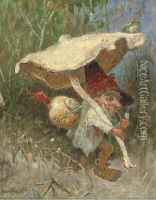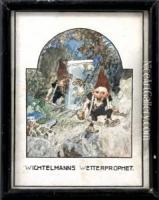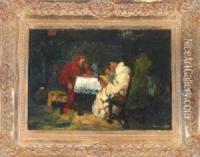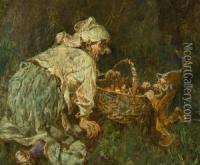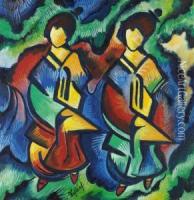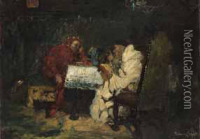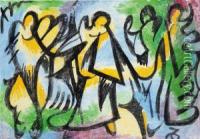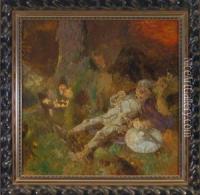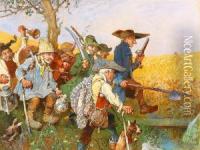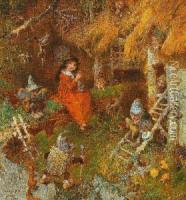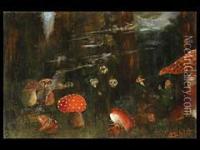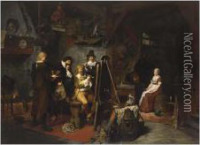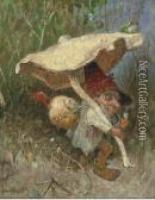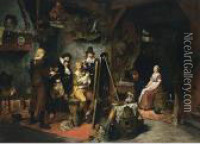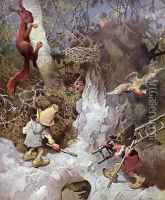Heinrich Schlitt Paintings
Heinrich Schlitt was a German genre and decorative painter, graphic artist, and illustrator, best known for his works that often featured mythical creatures, whimsical figures, and gnomes. Born on March 11, 1849, in Wiesbaden, Germany, Schlitt received his initial artistic training at the Städel Art Institute in Frankfurt and later studied at the Academy of Fine Arts in Munich, a prominent center for art and culture during the 19th century.
Schlitt's work reflects the influence of the Munich School, which was characterized by a detailed, realistic approach and often romantic themes. He was particularly recognized for his humorous and satirical illustrations which often included fantastical elements, a style that became quite popular during the era of Jugendstil in Germany, the German variant of Art Nouveau.
Throughout his career, Schlitt worked on various projects including book illustrations, frescoes, and decorative panels. His illustrations appeared in several books and periodicals of the time, and he became well-regarded for his ability to infuse fantasy with a sense of humor. Schlitt's frescoes and mural paintings adorned public buildings and private residences, showcasing his versatility and command over different mediums.
Heinrich Schlitt's artistic output contributed to the visual culture of his time and provided a unique blend of fantasy and humor that captured the imaginations of his contemporaries. His legacy, though not as widely known as some of his peers, remains a testament to the diverse and rich tapestry of German art in the late 19th and early 20th centuries.
Heinrich Schlitt passed away in 1923, leaving behind a body of work that continues to be appreciated by art enthusiasts and collectors, particularly those with an interest in the Art Nouveau movement and German art history.
